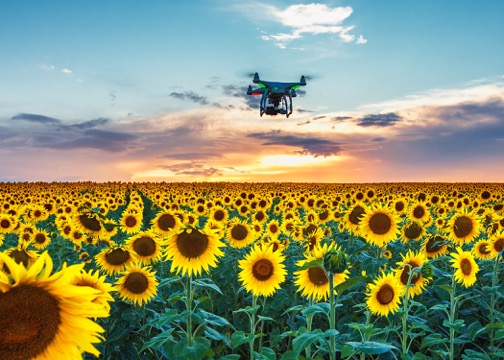The Latest Buzz in ‘RoboBee’ Research
Thanks to recent headway in RoboBee research and development, these mechanized pollinators could be headed to a greenhouse near you soon.
Guest Editorial By Tim Jennings, President of Custom Case Group, Maker of DroneHangar
My company has been manufacturing custom cases in the drone and unmanned aerial vehicle (UAV) industry for decades. Because we’re involved in so many facets—from the military to the consumer and agricultural segments—my team is often privy to advancements early on. Being a drone enthusiast myself, I try to keep up with the latest developments on my own time, too.
Today, some of the most exciting activity I’m seeing is in the field of agricultural drones, where researchers are making major progress toward mainstreaming RoboBees—tiny drones capable of pollination and other forms of indoor crop maintenance. While open-air agricultural applications, such as crop scouting and pesticide application, are now standard, there’s been little progress in indoor agriculture applications—until now.
New microdrone research in the U.S. and Spain could soon allow RoboBees to run greenhouses and large-scale indoor farms around the globe.
“RoboBees” – The Pollinators of the Future
RoboBees have been on the scene for some time through a collaborative project between teams at Harvard University and Northeastern University. The teams have been working together about 12 years to create “swarms” of tiny worker drones capable of tethered flight. The drones, with wingspans of just 1.2 inches, weigh less than real bees, but, tiny as they are, RoboBees are the result of some intense collaboration among experts in dozens of fields, including neurobiology, computer science and chemical engineering.
The Latest Advancements
Perching & Takeoff. It seems simple: Design a tiny drone that can take off and land easily. However, perching and takeoff have turned out to be among the most critical functions and toughest challenges in RoboBee development. This year, though, the Harvard team may have a breakthrough. The functions of perching and takeoff are critical because they allow the drones to “rest,” protecting them from the mechanical fatigue and power drain of constant flight. The team reported the possible breakthrough in an article in the journal Science titled, “Perching and Takeoff of a Robotic Insect on Overhangs Using Switchable Electrostatic Adhesion,” where they suggest that electrostatic forces allow the small drones to “stick” to different surfaces, such as plant leaves. And the power required to generate those forces is less than what’s needed to keep the RoboBee in flight.
Indoor Environmental Mapping. Large drones that can map and negotiate complex outdoor environments have been around a while; however, small size has been a major limitation in the development of drones capable of indoor mapping. So far, the massive data collection and processing necessary for environmental mapping requires a machine too large for indoor use. But that may be changing.
This year, a research team from the Centre for Automation and Robotics in Spain published a paper titled “Heterogeneous Multi-Robot System for Mapping Environmental Variables of Greenhouses” in the journal Sensors, where they describe a heterogeneous robot team capable of monitoring the environmental variables inside greenhouses. They call the drone team, which includes aerial and ground drones, a “system” that understands and negotiates its surroundings by way of a shared multi-sensor application.
The drones within the system, some of which have cameras for visual monitoring, can also measure factors like soil and air temperature, humidity, luminosity and carbon dioxide concentrations in the greenhouse environment.
How Soon?
It could be a couple more years before RoboBee teams will totally manage indoor crops. But advancements like that above ensure this tech is headed to the mainstream fast. What are your thoughts on drone automation for indoor agriculture? Where do you see this tech bringing the industry in the next 20 years?
Feel free to share on the California Ag Today Facebook page; we’re interested in knowing what you think.









